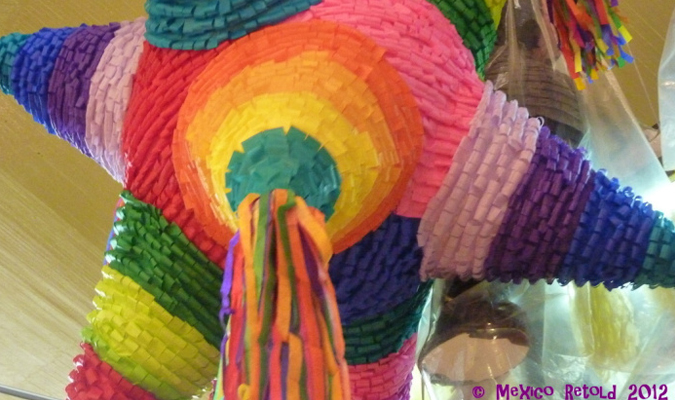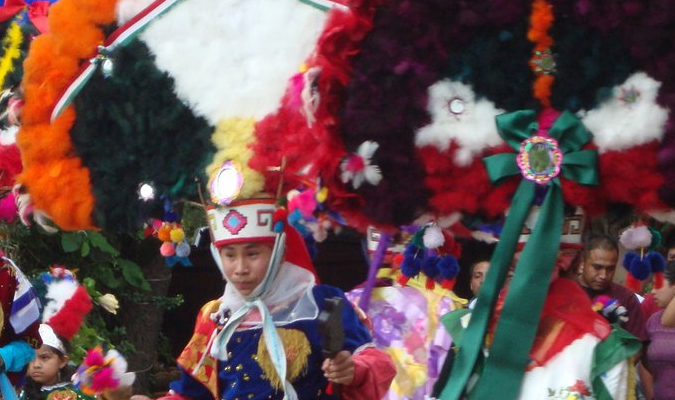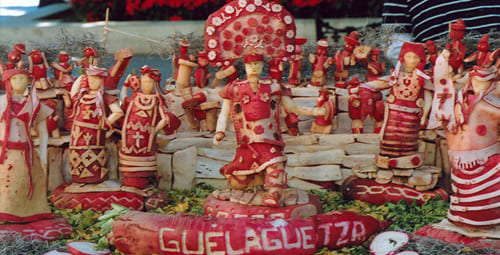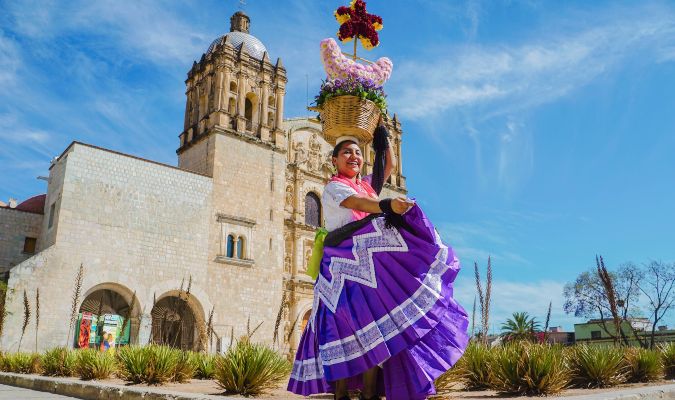It is an incredible time to be in Mexico as one gets to experience profound and unique traditional unlike the typical festivities we are so accustomed to.
The Christmas season in Oaxaca is filled with opportunities to celebrate both religiously and socially. An important aspect of Christmas in Oaxaca are family traditions, combining religious faith with the indigenous values of sharing with one’s pueblo or colonia. The children anticipate the dressing up of Mary and Joseph and the shepherds, the processions through the streets, the moments of joy when the piñata is broken and the riches pour forth as fruit and candy. Simplicity is the key in Oaxaca, but with its rich, indigenous past, simplicity becomes lavish during the Christmas season.
The Season starts early December and goes all the way through to early January! The “Posadas” begin on December 16th and continue to the 24th of December. The events on December 23rd, Night of the Radishes or “Noche de los Rábános”, are unique to Oaxaca.

Oaxaca abounds with traditional “Calendas” and “Posadas”. A Calenda is a procession of people on foot, carrying torches, followed by decorated vehicles and huge dancing ‘puppets’ accompanied by music. A “Posada” is a procession formed by a group of families and neighbors, led by children, dressed as Mary and Joseph.
They stop by various homes asking for posada (shelter) in a ritual song, but are refused by those within who also answer in song. The group is finally received at a home previously agreed upon, where the padrinos (Godparents) of the particular posada will receive the pilgrims with song and prayer. Then, coffee and tamales are served for the adults and the children’s heart are filled with joy while breaking the piñata. Beginning with the calenda on the 6th of December, the party continues with another calenda on the 10th, announcing the upcoming celebrations of the Virgin of Guadalupe. On the 12th, a festive breakfast is served to all in front of the Guadalupe Church.
On the 16th, the nine days of “Posadas” begin, as well as the “Calenda” of Oaxaca’s Patron Saint La Virgin de Soledád (Virgin of Solitude) around the Zócalo. This calenda is filled with cultural and religious expressions of the indigenous people from the seven regions of Oaxaca. There is a solemn procession and then the famous and colorful Danza de la Pluma (Dance of the Feathers) is performed outside the Basilica of Soledad.

From the 16th through to the 31st, you can enjoy the royal experience of the ‘breaking of the plates’; one eats buñuelos (a classic Christmas dessert), accompanied by hot chocolate and finally smashing the ceramic plates to the ground. Beside the Cathedral, stands will serve the same out of bowls which are then thrown against the sidewalk. Supposedly this dates back to the ancient Indian custom of destroying all of one’s belongings every 52 years, at the end of a cycle proscribed by the Gods. It is also suggested that this comes from Moctezuma’s habit of never eating from the same plate twice.
All over the markets and stores in town, Christmas decor and religious images are sold in large quantities, from moss and orchids called “San Miguelitos” which the country people bring down from the mountains, to tinsel, tree ornaments and figurines for adornment of homes and altars. It is a time of great joy in Oaxaca, as in all of Mexico. A very lively and colorful, huge open market in the Zócalo and Alameda Park (lasting six weeks) has food stands, handicrafts, games, and carnival rides.
On the 17th of December, there will be fireworks in front of the Soledad Basilica. On the 18th in the morning, joined again together for a breakfast in the patio of the basilica where music is played from around the state.
Unique only to Oaxaca, “La Noche de Rábanos” (Night of the Radishes, a tradition dating back to 1897) on the eve of December 23rd, an evening in where the Zócalo becomes the scene of a huge exhibition of figures sculpted from radishes.

The fourth and grandest Posada is on December 24th, when groups from all over Oaxaca meet in the Zócalo to celebrate the arrival of Christmas night. Prior to arriving at the Zócalo, each posada will proceed to the home of the madrina (godmother) who will provide a statue of the child Jesus for the local parish’s nativity scene. After a joyfully festive parade around Oaxaca, the community returns to its parish church and prepares to celebrate the “Misa de Gallo” (Mass of the Rooster), the first worship celebration of the Christmas feast.
The fiesta in Oaxaca, of course is not limited to the days leading up to the 25th. January 6th is celebrated as the “Feast of the Three Kings”. Small gifts are given to the kids. Families and friends share a ring-shaped loaf of bread called “Rosca de los Reyes”. Inside a number of tiny images of the child Jesus are hidden. A person who receives this in his slice of Rosca is obliged to host yet another fiesta for the final celebration of the Christmas season – on February 2nd. On this day, families bring an image of the child Jesus from their home altar along with candles to be blessed at church. This feast has come to be known as “Calendaria”.
The Night of the Petition, “La Noche del Pedimento”, is celebrated on December 31st. On a hill near Mitla, this ceremony is acted out at a tiny chapel where a cave represented the entrance to the other world, symbolized by the mouth of the jaguar god. Country people, and many of their city cousins, come with small models to petition favors from the god(s): cattle, houses, sometimes whole farms, automobiles, wives, good health, and just plain cash.
Although one is not likely to see Santa Claus roaming around Oaxaca, the religious and community traditions provide more than enough occasion to celebrate Christmas like nowhere else on earth.
This post was submitted by our Marketing Manager, Susanne Prenzel.





